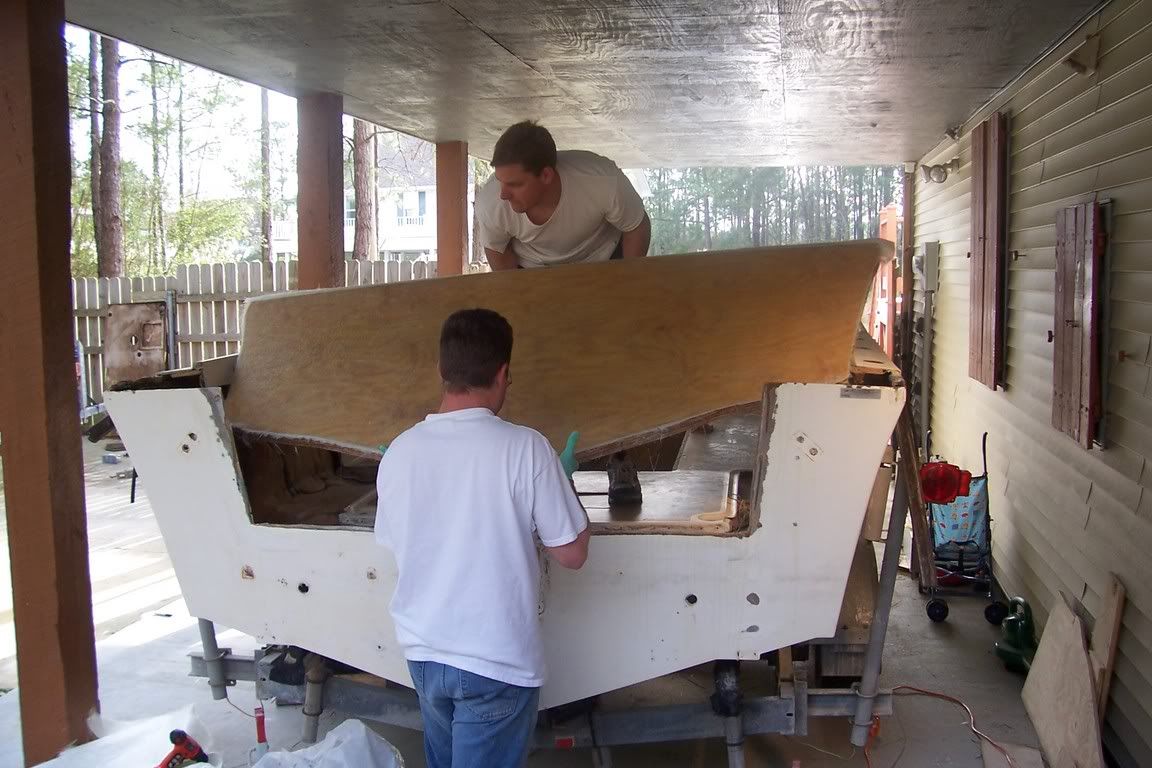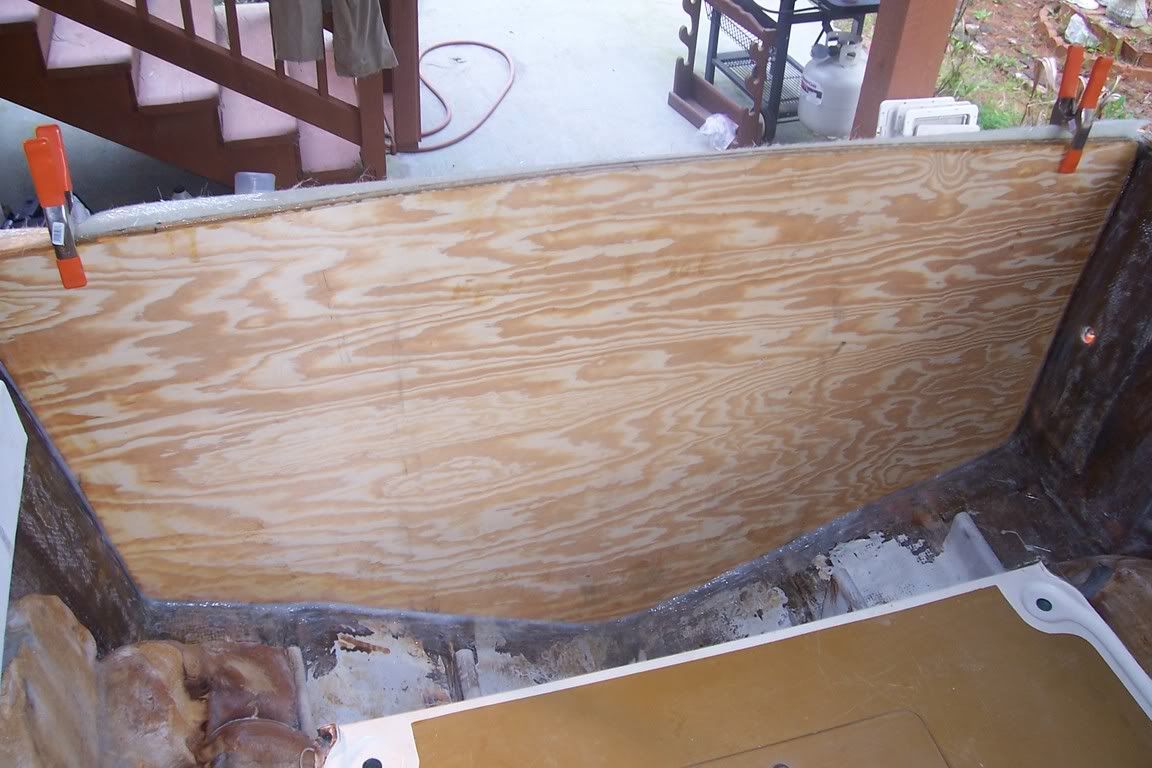I know the gap you are referring to... The small space between the edges of the core and the hull sides and bottom. I put down a nice bed of thickened resin (putty) before the core goes to place. Then we put the core to place and the excess squeezes out. Then I use the excess to form a nice fillet around the edges of the core.
The glass is so thick where the hull sides and hull bottom meet the transom, there is not a problem with a hard spot. Building a fillet and gradual layering of glass tabbing in that area will help in dispersing forces gradually otherwise.








